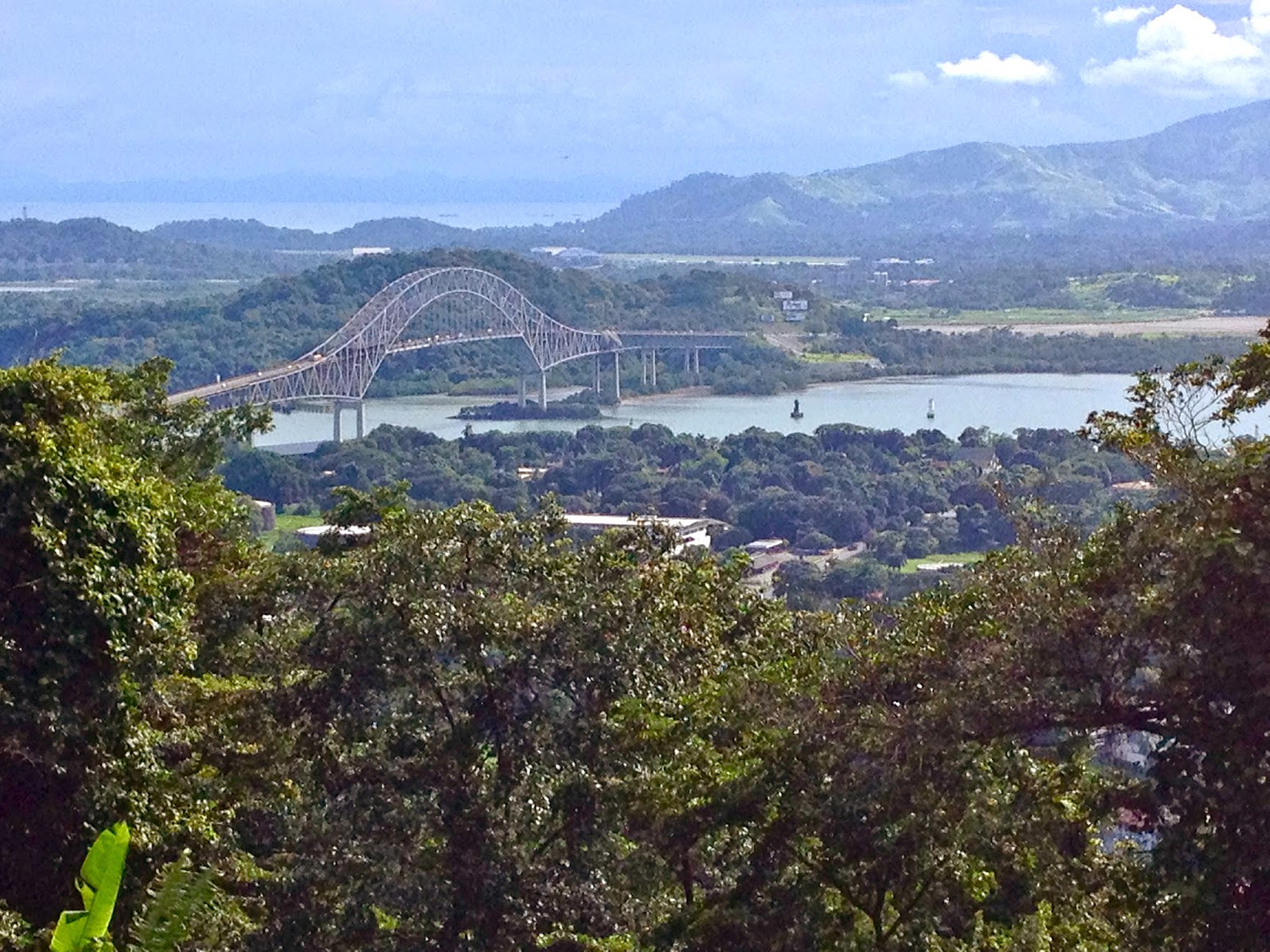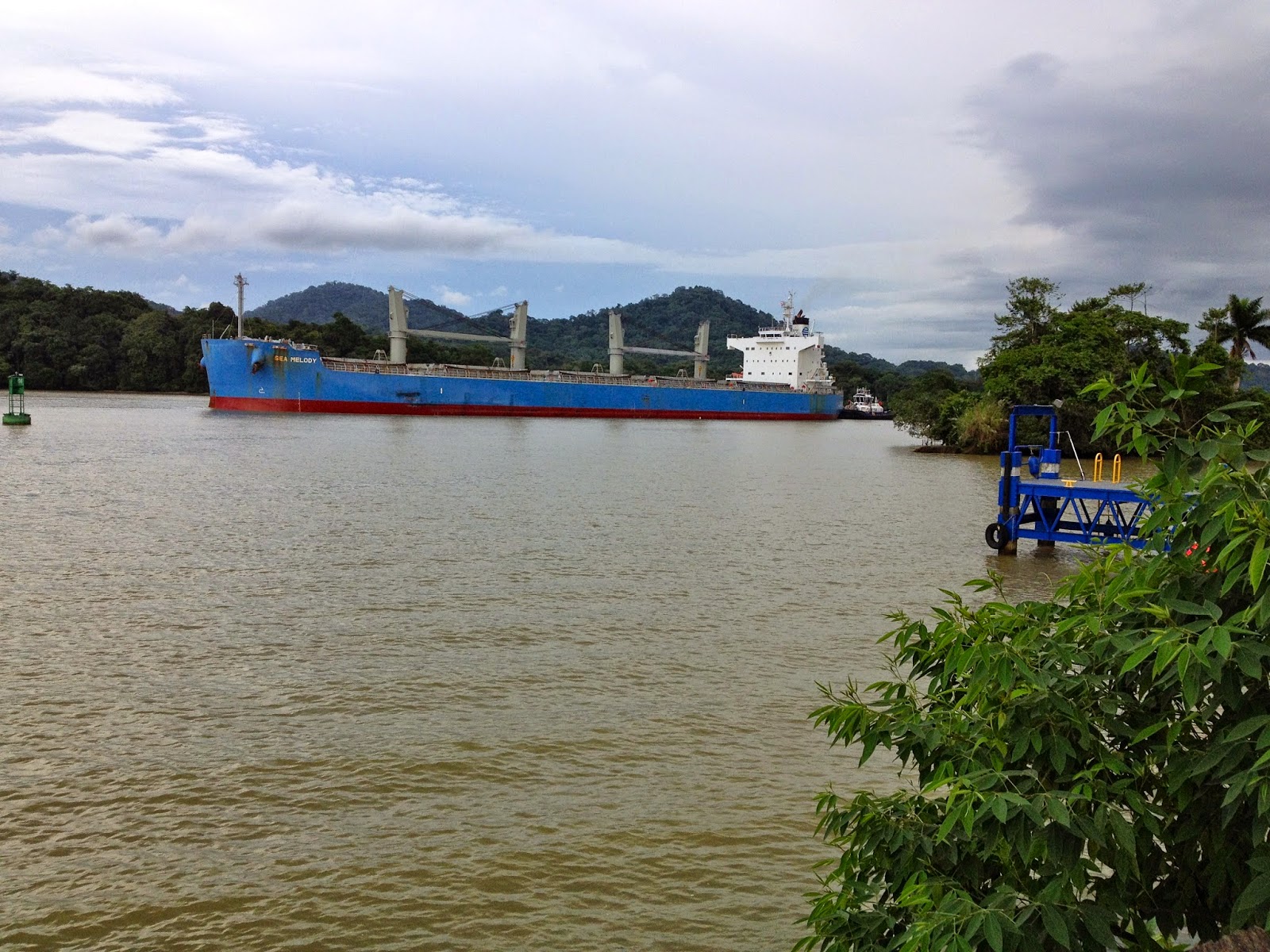 |
| a howler monkey |
Studying a species of new world primate has proven to be
greatly different than the African primates I am accustomed to (namely,
gorillas and baboons). To start with, white-faced capuchin monkeys are arboreal
monkeys that spend their days in the mid-level forest or high in the canopy.
This makes this species, by default, more challenging to locate, track, and
study. Of the week I have spent researching the capuchins on Barro Colorado
Island in Panama, two entire days consisted of wandering the forest perpetually
for hours without ever encountering the capuchins. On the other hand, we chance
upon troops of howler monkeys just about every half hour. If the howlers
weren’t so resolutely lazy, I would switch to that species. This is not to
complain, fieldwork in the African jungle can be infinitely worse, and I still
enjoy the rainforest, with or without capuchin monkeys.
 |
| a large capuchin male threatening me |
To find
these monkeys, myself and Lucia (my advisor’s wonderful Nicaraguan field assistant)
walk gently through the forest paths that dissect the home range of several
monkey groups. We stop occasionally to listen to the abundant noises pulsating
around us. Capuchin monkey movement in the trees makes a distinctive crashing
sound. And typically the infants in a group make piercing little screams that
are unmistakable. However, during the heat of the day when the monkeys are
resting, you can walk right by them without any clue of their presence. Once
you’ve found a group of capuchins, it takes just as much effort not to lose
them. Lucia and I will go dashing off of the designated path directly into the
dense understory. Sometimes, she will go one direction and I will go the
opposite. We use a system of hoots to communicate our locations since you
cannot see after about 2 meters in front of you. This week has been
exceptionally arduous, for the only monkey groups we have contacted have been
groups that are relatively un-habituated. This means upon seeing us, the
monkeys have a tendency to go hurtling off in the other direction, barking
alarm calls and sneering threats towards us. Meanwhile, us terrestrial humans
have to stumble clumsily through the thicket of lianas, cobwebs, ant nests, and
menacing spiny vines while craning our necks at ludicrous angles to track the
monkey group. The larger males and juveniles sometimes have momentary audacity,
and climb into a position directly above our heads to slam down branches and
throw seeds at our skulls. Or they will shake vines in front of our faces and open
their mouths in a clown-like frown, bobbing their heads back and forth. It’s
actually quite hysterical, especially when several of them line up and squish
all their heads together to threaten us. It’s no wonder why my advisor calls
these guys “devil’s spawn.”
 |
| capuchin lying on the branch to relax |
When they
are more comfortable with our presence in the forest, the monkeys are endlessly
entertaining. When eating, they make soft ooo-ing contact calls back and forth.
It’s perhaps the most adorable sound I’ve ever heard a monkey make. In the middle
of eating, sometimes the monkey will flop down on a branch, legs and arms
dangling and swinging effortlessly. Occasionally, another monkey will come up
and the pair will snuggle up together. Intermittently, some of the monkeys will
climb to the forest floor to eat insects or wrestle. While they are not nearly
as social as the baboons I have studied, they still like to groom each other
often. And the males are much more social with the infants, even carrying them
around from tree to tree.
 |
| grooming capuchins |
With the habituated
groups, Lucia collects basic data on behavior. This first requires full
identification of all the monkeys in a group. While I used noseprints to
distinguish gorillas, and tails and ears for baboons, identifying capuchin
monkey individuals consists of looking at the eyebrows and forehead hairlines.
Then, 10-minute long focal samples are collected on each of the monkeys,
focused on rudimentary behavior such as feeding, locomoting, and sociality.
It’s much less in depth as my studies of the baboons, but still yields an
excellent basis for behavioral allocation. Certain behaviors are recorded on an
all-occurrence basis, such as intergroup interactions, grooming, and
copulations. The current project with the capuchins is centered upon collective
decision-making. For instance, what or who determines where a troop goes in the
forest or what they eat? During intergroup (between different groups)
encounters, how are decisions made and who initiates them? My advisor and a
team are planning to collar several monkeys in different groups next week to enhance
the tracking ability of the primates and facilitate better data collection.
While I have not yet decided if
this will be the species I focus my Ph.D. on, they have proven to be both
challenging and exhilarating. That is perhaps what I love most about studying
primates. It is an unpredictable field, yet it is one that can be greatly
rewarding.
To give those who are interested in
knowing a little more information about white-faced capuchin monkey life
history and ecology: they are a diurnal species of primate that live in
tropical wet and dry forests ranging from Belize to Northwest Colombia and
Ecuador. They are distinguished by their black bodies and white face and
shoulders. They also have a semi-prehensile tail that coils into a spiral when
not in use. They have one of the largest brain to body size ratios of any
primate, indicating a high intelligence level. Capuchin adolescents mature around
5-6 years of age and mature females have an infant about every 2.2 years. Males
disperse at the time of maturity to find new groups, while females remain in
their natal troop. Capuchins live in patriarchal units that average around 10
individuals, typically one or two large adult males, several adult females, and
several sub adults and juveniles. Both sexes have linear hierarchies of
dominance, with the alpha male being dominant to the top-ranking female. These
monkeys are omnivores, with diets that are selective for fruits and insects.
They are highly territorial in their home range, making intergroup interactions
highly interesting. They are very curious individuals, and have been seen
grooming other species of monkey and traveling with peccaries and coatis. Some
monkey groups have been shown to use tools to crack open seeds or clams,
another sign of their increased intelligence level.
 |
| infant capuchin |
 | |||
| two capuchins threatening with their heads together |























